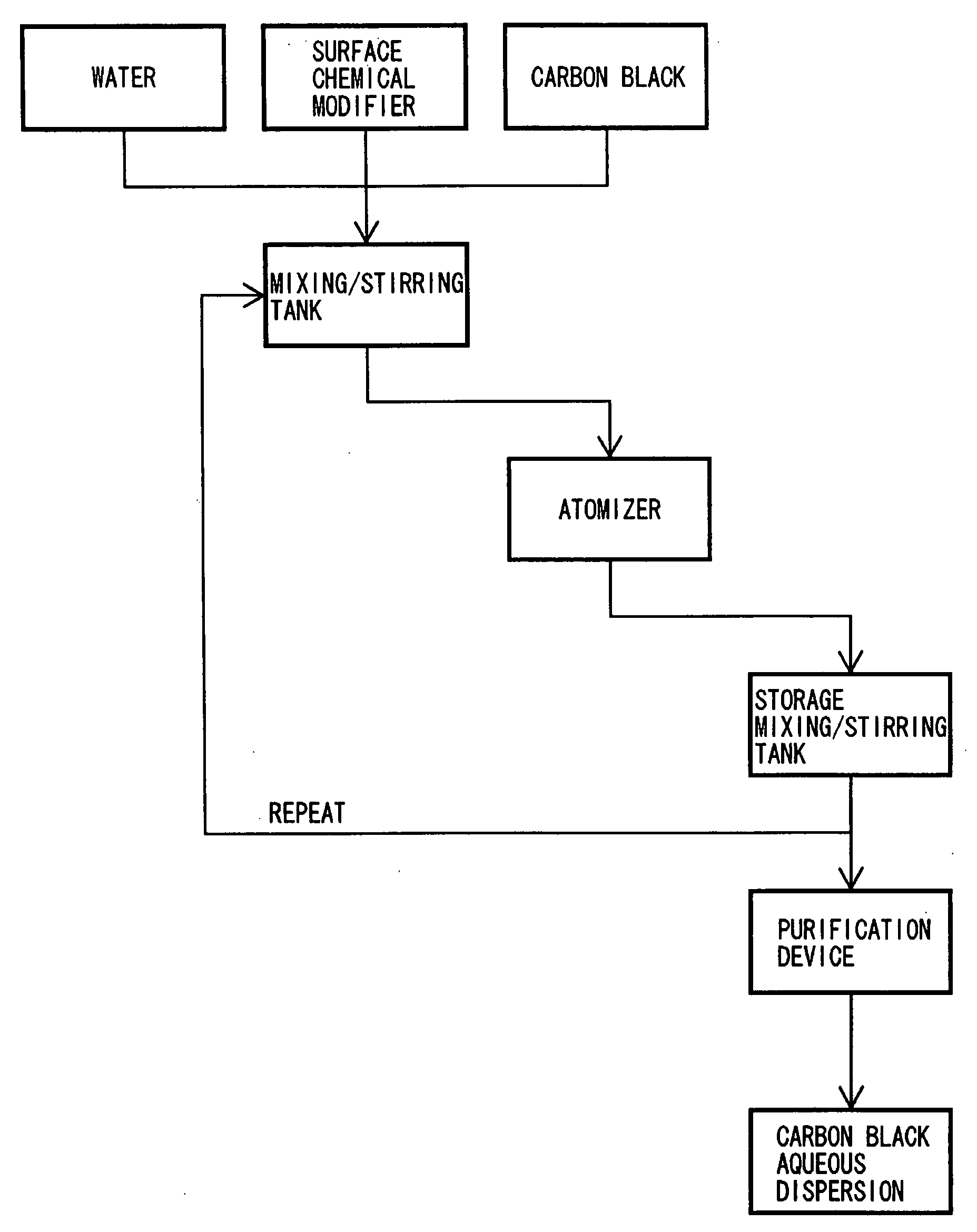Carbon Black Aqueous Dispersion and Method of Producing the Same
- Summary
- Abstract
- Description
- Claims
- Application Information
AI Technical Summary
Benefits of technology
Problems solved by technology
Method used
Image
Examples
example 1
[0039]A mixing / stirring tank was charged with Tokablack 7550F (manufactured by Tokai Carbon Co., Ltd.) as carbon black, sodium peroxodisulfate as a surface chemical modifier, and deionized water in a proportion stated below. The mixture was sufficiently stirred and mixed to obtain a slurry. The slurry was continuously stirred and mixed.
Carbon black: 10 parts by weight
Sodium peroxodisulfate: 10 parts by weight
Deionized water: 80 parts by weight
[0040]An Ulthimaizer (manufactured by Sugino Machine Limited) was used as an atomizer. The slurry was fed to the Ulthimaizer and was sprayed under a pressure of 245 MPa to cause collision between sprayed streams. The slurry was transferred temporarily to a storage mixing / stirring tank, cooled with stirring, and transferred back to the mixing / stirring tank. The slurry was atomized by repeating the above operation of causing the slurry to collide 10 times. The temperature of the slurry rose from 45° C. (initial temperature) to 90° C. by friction ...
PUM
 Login to View More
Login to View More Abstract
Description
Claims
Application Information
 Login to View More
Login to View More - R&D
- Intellectual Property
- Life Sciences
- Materials
- Tech Scout
- Unparalleled Data Quality
- Higher Quality Content
- 60% Fewer Hallucinations
Browse by: Latest US Patents, China's latest patents, Technical Efficacy Thesaurus, Application Domain, Technology Topic, Popular Technical Reports.
© 2025 PatSnap. All rights reserved.Legal|Privacy policy|Modern Slavery Act Transparency Statement|Sitemap|About US| Contact US: help@patsnap.com


